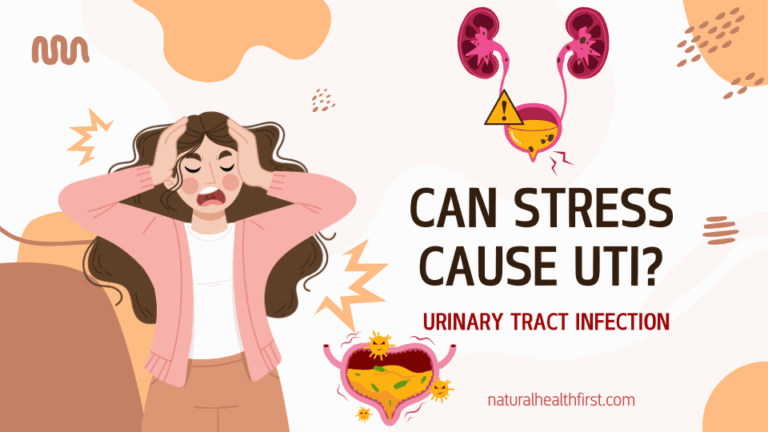Every year, shocking new data reveals that Anterior Cruciate Ligament (ACL) injuries are spiking at record rates—not just among pro athletes, but in high school and recreational sports as well. Devastating to performance and mental health, the ACL tear has ended too many dreams on the field and court. But in 2025, game-changing research shows that most ACL injuries can be dramatically reduced with the right prevention strategies—a revelation rocking the world of sports medicine. This guide will expose the most effective, science-backed ACL injury prevention exercises, analyze why ACL injuries happen, and unveil the groundbreaking methods athletes are using to stay off the operating table.
The ACL Injury Crisis—Why 2025 May Be The Worst Year Yet
This year, new statistics show ACL injuries are at an all-time high. Recent data highlights:
- ACL injury rates are up 31% for female athletes under 18.
- Basketball and soccer players are the most at risk, but no sport is immune.
- More than 200,000 ACL injuries are diagnosed annually in the U.S., with nearly 100,000 ACL reconstructions performed each year.
- The average recovery time: 9-12 months—which can derail scholarships, pro contracts, and dreams.
But here’s the bright spot: Researchers confirm that specialized ACL injury prevention exercises can slash injury risk by 50% or more, especially when started young.

What Makes ACL Injuries So Devastating?
Located deep in the knee, the ACL is crucial for stabilizing the joint, enabling pivoting, and preventing the lower leg from moving too far forward. Tears often happen in a split second—cutting, jumping, or landing “just wrong.” Surgery is expensive and recovery often incomplete, with a high risk of re-injury and lingering mobility or mental health effects.
Common risk factors include:
- Weak glutes and hamstrings
- Poor landing mechanics
- Core instability and imbalance
- History of previous knee injuries
- Fatigue and inadequate rest
Unlocking The ACL Solution—How Prevention Exercises Defy The Odds
Shocking but true: A well-designed, targeted exercise program is the single most effective weapon against ACL injury risk.
ACL Injury Prevention Exercises: The Game-Changing Categories
Here are the five pillars of effective ACL prevention programs:
- Strength Training – Building up hamstrings, glutes, and core to balance the powerful quadriceps.
- Plyometrics – Teaching the body to land softly and absorb force safely.
- Agility Drills – Enhancing quick cuts and directional changes without stressing the ligament.
- Balance & Stability – Improving proprioception and coordination.
- Flexibility & Mobility – Keeping hips, knees, and ankles moving freely.
ACL Injury Prevention: Top 10 Must-Do Exercises
- Glute Bridges (activates and strengthens the gluteal muscles)
- Nordic Hamstring Curls (builds hamstring strength to protect the knee)
- Single-Leg Romanian Deadlifts (develops balance and posterior chain power)
- Lateral Band Walks (improves hip abductor strength)
- Drop Jumps with Controlled Landing (teaches proper landing mechanics)
- Walking Lunges (trains movement patterns and core stability)
- Plank Variations (builds deep core strength crucial for knee alignment)
- Box Jumps (improves explosive power and safe landing form)
- Deceleration Drills (trains muscles to stabilize on sudden stops)
- Agility Ladder Drills (cultivates coordination and safe change-of-direction skills)
Startling fact: Simply doing glute/hamstring and landing drills 3x/week has been linked to up to a 60% decrease in non-contact ACL injuries among youth athletes.

Do’s and Don’ts for ACL Safety
Do:
- Warm up before activity.
- Focus on landing techniques.
- Train hamstrings and glutes.
- Stretch hips and calves.
Don’t:
- Skip rest days.
- Overtrain quadriceps without balance.
- Land with locked knees.
- Ignore pain signals.
For more on total body protection strategies, explore our prevention category.
The 2025 ACL Injury Prevention Protocol—Sample Weekly Plan
| Day | Exercises | Focus |
|---|---|---|
| Monday | Glute Bridges, Box Jumps, Lateral Band Walks | Power, Hip Strength |
| Wednesday | Walking Lunges, Nordic Curls, Planks | Posterior Chain, Core |
| Friday | Single-Leg Deadlifts, Drop Jumps, Ladder Drills | Balance, Landing, Agility |
| Daily | Light Mobility (Foam Rolling, Stretching) | Flexibility, Recovery |
Traditional Warmup vs. ACL Prevention Protocol
| Item/Method | Traditional Warmup | ACL Prevention Protocol |
|---|---|---|
| Jogging | 5-10 mins, low gains | Often included, not enough |
| Static stretching | Brief, sometimes ignored | Replaced by dynamic movements |
| Power/Strength Drills | Rare | Essential, multiple times/week |
| Plyometrics | Infrequent | Central to protocol |
| Core/Balance Work | Sometimes | Focused and regular |
Lesson: Jogging and stretching are not enough anymore—structural strength, power, and technique matter most.
Why Don’t More Athletes Use ACL Prevention Exercises?
Incredible as it may sound, less than 25% of youth teams rigorously use proven knee injury prevention programs, despite overwhelming evidence of effectiveness. Why? Lack of education among coaches, old habits, and sometimes the myth that “it’ll never happen to me.”
Sports medicine experts now call on all athletes, parents, and teams to treat injury prevention like skill practice—non-negotiable and as regular as drills or scrimmages.
Nutrition: The Missing Link In ACL Injury Prevention
While smart training is essential, optimal nutrition is just as critical for joint health, muscle recovery, and tissue repair. A diet rich in:
- Lean protein (chicken, fish, legumes)
- Healthy fats (omega-3s, olive oil)
- Collagen and gelatin
- Vitamins C, D, and K
- Minerals like magnesium and zinc
… can speed recovery, fortify ligaments, and decrease re-injury rates. Proper hydration and anti-inflammatory foods also play a major role.
Explore sport nutrition strategies that boost protection in our nutrition category.
Shocking Data: The True Cost of Ignoring ACL Injury Prevention
- Up to 70% of all ACL injuries could be prevented with proper exercise routines.
- Athletes who tear an ACL before age 18 are up to 6x more likely to develop early knee arthritis.
- Direct healthcare costs per ACL tear: $17,000–$26,000; indirect costs (time lost, mental health, missed opportunities) can be double that.
- More than half of ACL-injured athletes experience depression or anxiety during rehab, highlighting a major impact on mental health.
For the intersections of physical and mental wellness, read the latest at mental health nurse practitioner salary.
Gender, Age, and Sport: Who’s Most at Risk?
Girls and women are 2–8 times more likely than males to suffer non-contact ACL tears—mainly due to anatomical differences, landing patterns, and hormonal fluctuations. Soccer, basketball, volleyball, and skiing carry the highest risks. Young, growing athletes need targeted drills throughout adolescence.
Real Stories: How Prevention Programs Are Turning The Tide
Across the U.S., “ACL-defying” teams—those fully embracing prevention exercise regimens—report:
- Reduced season-ending injuries by up to 82% versus control teams
- Fewer missed games and practices
- Higher overall team morale and confidence
- Less need for expensive surgeries and rehab
- Scouts and college coaches now demanding proof of injury-prevention protocols in top programs
ACL Injury Prevention vs. Surgery—The Bottom Line
| Approach | Time Required | Cost | Effectiveness | Mental Health Impact |
|---|---|---|---|---|
| Prevention | ~20 min/session | Minimal (home) | Up to 70% reduced risk | Empowers, reduces anxiety |
| Surgery + Rehab | 9–12 months | $20,000+ | Full return rare, 25% re-tear | Major anxiety, depression risk |
The numbers don’t lie: Incorporating targeted exercises is the most cost-effective and powerful method to avoid the pain—both physical and emotional—of ACL tears.
Need help developing a consistent routine? Tap into the practical advice and routines in our fitness section.
The Shocking Truth: The Prevention Revolution Is Here
In 2025, ignoring ACL injury prevention exercises is no longer an option for competitive and recreational athletes alike. Medical experts now urge everyone, from pee-wee soccer to pro sports, to prioritize knee health or risk the devastating consequences of a career-altering tear.
What’s the bottom line? With as little as 20 minutes of focused effort, 2-3 times per week, you or your athlete could join those seeing record-low injury rates and record-high confidence on the field.
Empower your team, share the knowledge, and be the shockwave that finally reverses the epidemic of knee blowouts everywhere.
Be part of the transformation—your knees will thank you for a lifetime.








